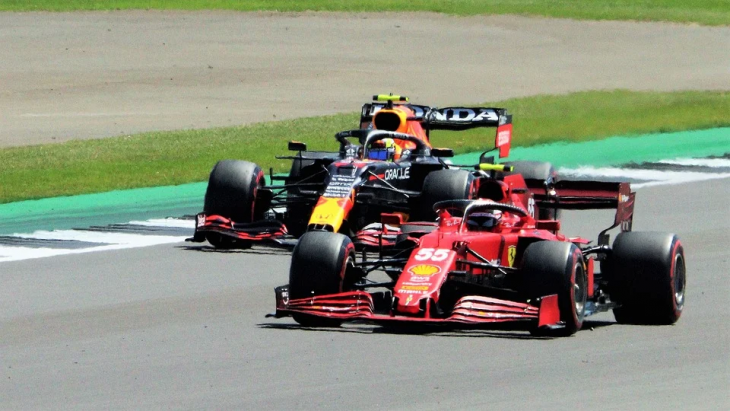At long last, it seems we finally have an authentic battle for supremacy in Formula One. The 2021 season has produced some spectacularly competitive races, full of thrills and spills, now that it seems Red Bull Racing have cars that are capable of jostling for position with Mercedes.
Instead of just one dominant driver and team combination, we now appear to have two, as Max Verstappen and Red Bull chase for the F1 Drivers’ and Constructors’ championships, almost neck and neck with reigning champions Lewis Hamilton and his previously untouchable Mercedes team. This has made for a great spectacle, even restoring some of the lost interest in the world’s most prestigious motorsport series.
Max and Lewis wrote yet another thrilling chapter in this year’s title race before a packed house at @COTA ???
The story of this incredible season continues in Mexico ? #USGP ?? #F1 pic.twitter.com/UZZBaCtMwI
— Formula 1 (@F1) October 26, 2021
Despite bookies clearly favouring Mercedes and Hamilton to continue their dominance, outright betting odds backing Red Bull and Verstappen have been slashed, as the two teams and their drivers compete for leadership of the respective championships. Given that Formula 1 is a sport of high stakes, this makes things even more exciting for anyone betting on Grand Prix races. For that reason, it’s more important than ever to find trusted and reliable online bookmakers, backed by glowing reviews for excellent value and betting options.
Thankfully, the experts at Asiabet have produced an extensive guide, covering everything we need to know about sports betting sites and online betting, ranking bookies for the overall quality of their services and range of markets available. With an increased number of betting options now available for motorsports and Formula One, that’s handy to know, particularly during what has become one of the most competitive seasons in recent memory.
Dominant partnership led to declining interest
Putting their lengthy era of dominance into some perspective, at the end of last season, Mercedes topped the 2020 Formula One World Constructor’s Championship on 573 points, which is quite literally miles ahead of the 319 points achieved by Red Bull Racing in second position. Furthermore, it was the seventh consecutive championship for Mercedes, along with the second in a row boasting a winning margin of more than 200 points.
Some believe this margin of difference between Mercedes, compared to pretty much every other competing team, largely accounts for the accompanying dominance of Lewis Hamilton. The Briton has won six of the last seven Formula One World Driver’s Championship titles, with that run only interrupted by his Mercedes teammate Nico Rosberg, who claimed the 2016 title. That year, Rosberg pipped his colleague to the Drivers’ Championship on 385 points, while Hamilton concluded the season in second place on 380 points.
Although this is taking nothing away from the achievements of Mercedes or Hamilton, who appeared to have established the perfect unison between man and machine, rival teams have rarely come close to providing any genuine competition. This clearly speaks volumes about how unfairly F1 had evolved, especially when it comes to the mismatched economics of this popular motorsport, which inevitably prompted the need for important changes. During one interview in 2020, even Hamilton admitted that his continued winning must be tiresome for fans to watch.
Given such dominance by one team and their superstar driver, unless you had a vested interest in their partnership, there was a distinct lack of competitiveness that was otherwise making Formula One predictable. The gradual decline of TV audiences and Grand Prix attendances was making one thing quite clear, F1 had become boring. This was actually quite alarming for those running F1 to even contemplate, due to their auto racing championships having previously been considered the absolute pinnacle of motorsports. Something had to give.
2022 changes aimed at balancing the competition
Nothing is more exciting than a genuinely competitive Grand Prix race, in which numerous drivers are capable of challenging, aiming for the chance of being first past the chequered flag, with rivals not far behind them at the end of a thrilling battle to the finish. That’s what the TV audiences and attending fans want to see, especially in an era where paid-TV subscriptions are increasingly more expensive, while ticket prices to attend race weekends continue to soar.
The official Formula One website has published an interesting list, highlighting ten key points, explaining how the all-new 2022 F1 car could revolutionise the levels of competitiveness. Indeed, the very first point claims the new designs will allow closer racing, along with the potential for more frequent overtaking. This indicates an increasing focus on driver skill, rather than the power of the cars they are fortunate enough to be driving.
While driver safety remains at the forefront of every design change, there are many novel improvements aimed at making Grand Prix races more exciting. These include new rear wings with rolled tips, which means cars create less of a disrupted ‘dirty air’ wake behind them, thus allowing cars behind to get closer when pursuing chances to overtake. The same thinking is behind new and improved wing and nose concepts, additionally reducing the outboard wake.
Thanks to these design changes that will affect all cars and teams, along with maintaining the current 1.6-litre turbo-hybrid power units, the 2022 F1 season could be one of the most competitive seasons ever. Following on the back of what has already been an eye-catching 2021 campaign, this is great news for fans of the sport, eager to see Grand Prix racing return to its unpredictable and unmissable best.









